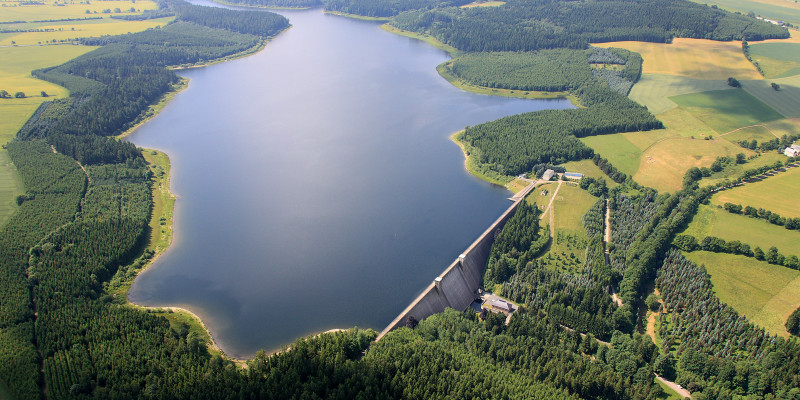Semi-natural water bodies like reservoirs are particularly valuable habitats for an abundance of species. Typically present are the European perch (Perca fluviatilis), a highly adaptive fish which can grow to a length of 70 centimetres and feeds among others on insects on the water surface. Species on the Red List such as the smooth stonewort (Nitella flexilis) live in these reservoirs. Characean algae are as abundant on the bottom of water bodies as thick grass, offering juvenile fish an ideal hiding place to protect against predators. The algae and organisms which live in it are a source of food for the great crested grebe and other waterfowl.
The catchment areas of these reservoirs are often in wooded areas with very steep riparian zones and embankments. The dam itself is an area with large boulders and rocks, whereas fine gravel and sands are characteristic of inlets and banks. The moors and acidic forest floor in the catchment area result in reservoirs typically containing higher levels of humic substances which lower the pH and are significant in determining species composition.
Reservoirs primarily serve the production of drinking water, flood protection and the production of electricity. Some reservoirs (Biggetal, Sösetal) accommodate fishing and a limited use for recreational purposes. Eighty per cent of Germany's deep, large, lime-deficient highland area lakes already have the "good" ecological potential which the EU Water Framework Directive requires, which puts this water type in the leading group of water types.
The water body type of 2017 is a model for other water bodies in Germany, most of which do not yet have good ecological status. These are the findings of a new study by the German Environment Agency entitled "Water Framework Directive - the status of German waters 2015". One key means to achieving the objectives of the EU Water Framework Directive is the sustainable management of water geared toward its use as drinking water.
 Click to enlarge
Click to enlarge
